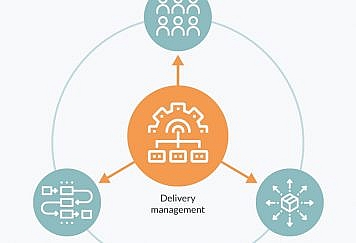The importance of particle size cannot be overstated. It is a precise science that leaves nothing to chance. Fortunately, AI has been proven to be a valuable tool for accurate measurements and calculations.
Want to know more? Here are 5 ways AI-driven particle size analysis is transforming modern industries.
Pharmaceutical Industry: Ensuring Drug Safety And Efficacy
Particle size is of paramount importance in the pharmaceutical industry. For example, smaller particles increase the surface area and dissolution rate of the substance. These smaller particles dissolve faster, allowing a drug to take effect sooner.
Particle size also affects bioavailability and solubility, which in turn determines dosage. This is why there can be no room for error when it comes to manufacturing medical drugs. The health and vitality of people across the world depend on exact measurements and calculations.
To further improve the accuracy of the lab’s particle size analyzer, it may incorporate automated, AI-driven technology. This increased accuracy allows big pharma to give the medical establishment more detailed and accurate information about the effects their drugs will have.
Food And Beverages: Perfecting Tastes And Textures
Have you ever wondered why the same food product can taste so different from one manufacturer to the next? It’s thanks to the skills of food technologists and science. The food and beverage industry is well acquainted with the effect particle size has on taste and texture.
Smaller particles create a smoother texture and appearance, whereas larger ones produce a chunky feel and look. But it doesn’t stop there. Smaller, uniform particles have richer flavor profiles and more even extraction rates.
Manipulating and controlling particle size impacts the tastes and textures of all your favorites, like cocoa and coffee drinks, ice creams, chocolates, and more. AI algorithms help by allowing real-time monitoring and adjustments to maintain consistency and quality.
Environmental Monitoring: AI For Pollution Control
Pollution control is a crucial part of modern life. As populations grow and more industries spring up to serve them, pollution also increases. Monitoring air and water quality involves a deeper understanding of the particles that exist in them and how the size of these particles affects health.
Artificial intelligence is already widely used in environmental initiatives. It can help to optimize the use of natural resources, improve energy consumption, and calculate ways to reduce carbon emissions. And that’s not all it can do for the environment.
We’ve all heard about the need to lower our carbon footprints. We must reduce, reuse, and recycle as part of our carbon footprint strategy. But what does it practically mean to reduce your carbon footprint at the ground level?
It means lowering greenhouse gas emissions to reduce the ravages of climate change. AI is increasingly used to track particle size and accurately measure and monitor air and water pollutants.
Material Science: Optimizing Nanomaterials
The field of material science governs the discovery of new materials, as well as their design. A scanning electron microscope (or SEM) does much of the work. This powerful microscope is a common feature across the energy and electronics sectors and the aerospace and chemistry industries.
The high magnification of a SEM is used to observe the structure and morphology of the tiny particles in materials. Because particle size affects the status and properties of the latest nanomaterials, exact measurements and calculations are essential.
AI is now widely used to detect and recognize optimal particle size in SEM images automatically, saving engineers and scientists valuable time and resources.
Construction And Civil Engineering: Extending Material Life
Even the construction of new urban developments and their infrastructure depends on particle size analysis. It can optimize common construction materials, like cement and asphalt, to create smoother surfaces with superior strength and longevity.
New construction technology is constantly being devised for home construction. But any structure, be it a building, a wall, or a road, requires maintenance to prolong its use and ensure its safety.
Construction and maintenance go hand-in-hand. If you build it stronger from the start, you reduce the likelihood of structural failure and minimize general wear and tear. So, to further strengthen this bond, AI is used to enhance quality control and predictive maintenance.
This offers better construction materials with increased sustainability. The benefits of AI-driven particle analysis extend to cost efficiency, reducing the inevitable costs associated with maintenance.
Follow TechStrange for more Technology, Business and Digital Marketing News.





